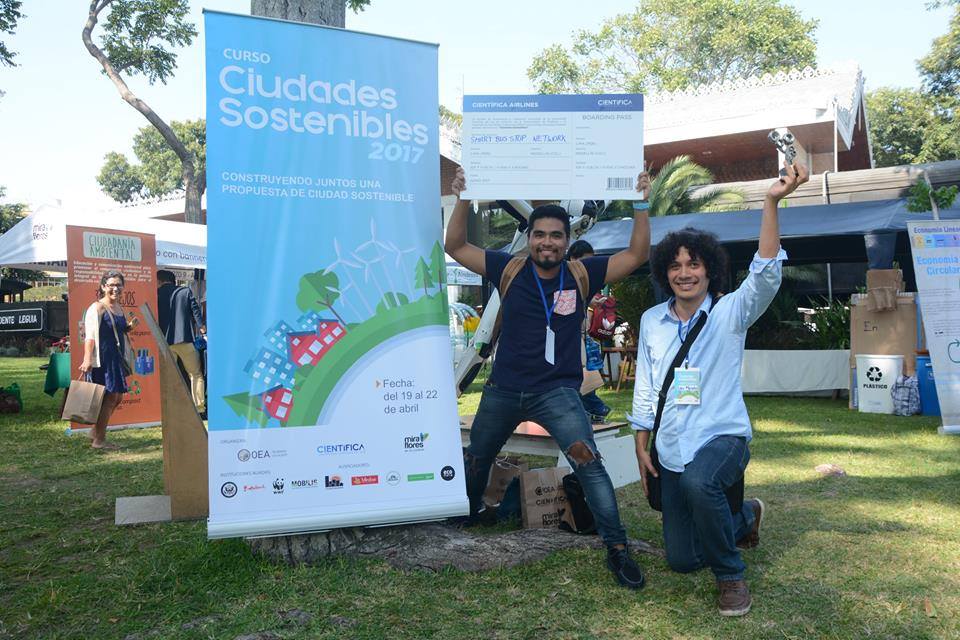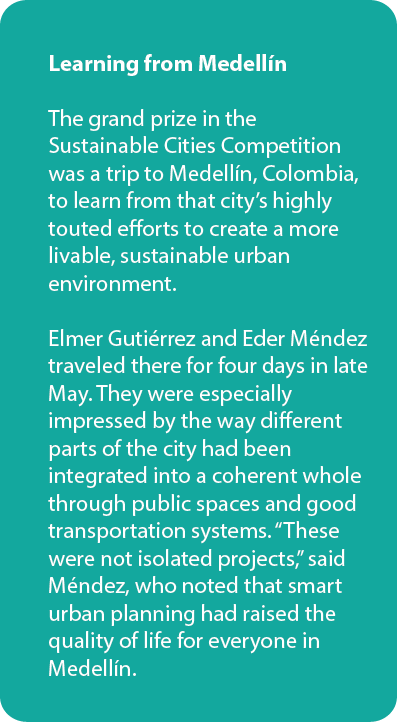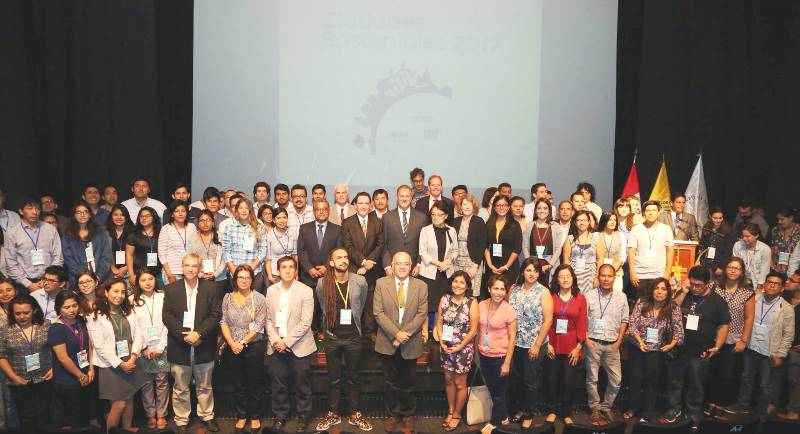
 A Sustainable Cities Competition held in Miraflores, Peru, drew more than 100 proposals on how to make that part of Lima even more environmentally friendly than it already is. The competition—held in conjunction with the Sustainable Cities Course that took place in that city in April—ended on Earth Day, with a project fair in a city park. There, the top 10 teams gave presentations explaining their ideas, and the three winning projects were announced.
A Sustainable Cities Competition held in Miraflores, Peru, drew more than 100 proposals on how to make that part of Lima even more environmentally friendly than it already is. The competition—held in conjunction with the Sustainable Cities Course that took place in that city in April—ended on Earth Day, with a project fair in a city park. There, the top 10 teams gave presentations explaining their ideas, and the three winning projects were announced.Here’s a quick look at the top three projects:
The municipality of Miraflores, an upscale district of Lima, conceived and organized the competition. Entries were judged on a point system based on innovation, viability for local governments, relevance, clarity of content, and potential to be replicated.
 Miraflores already has a reputation as a livable place, with a network of bicycle lanes and an award-winning city recycling program, among other such efforts. That made it especially challenging to come up with new ideas, according to contest winners Elmer Gutiérrez and Eder Méndez. Both live in Trujillo, on Peru’s northwest coast, where they work independently as architects and are in the process of getting master’s degrees in architecture and sustainability at the Universidad Ricardo Palma.
Miraflores already has a reputation as a livable place, with a network of bicycle lanes and an award-winning city recycling program, among other such efforts. That made it especially challenging to come up with new ideas, according to contest winners Elmer Gutiérrez and Eder Méndez. Both live in Trujillo, on Peru’s northwest coast, where they work independently as architects and are in the process of getting master’s degrees in architecture and sustainability at the Universidad Ricardo Palma.
After a lot of brainstorming, they came up with an idea for modular equipment that could be installed at bus stops. The basic component—for places where there is already adequate shelter and seating—would be a post equipped with Wi-Fi technology useful both to city officials and to bus riders. Sensors on the post would constantly measure factors such as noise levels or air pollution, and riders would be able to check on how far away the next bus is.
Without such technology, many bus riders give up and end up looking for other means of transportation such as taxis. “People get fed up,” Gutiérrez said, adding that this contributes to more vehicles on the road.
The project envisioned adding on other components to provide basic seating and shade in places that do not currently have physical bus stops. This could be especially useful to help bring order to public transportation in smaller cities that are not as advanced as Lima. In Trujillo, for example, “people still have that idea that you can get on the bus anywhere, even in the middle of the street,” Méndez said, adding that without a physical structure in place it’s harder to get users to change those habits.
Capturing the Fog
The second-place project focused on water management, using as a starting point the fog that often rolls in off the ocean and settles over Lima during the winter months, around May through November. The proposal would set up structures to trap and collect the water droplets in the fog and then use the water that is collected in public parks, for example in drip systems or water play features. A walking route could then be established to connect public recreational areas in Miraflores and, along the way, educate people about how to manage water resources.
The idea of capturing water from fog is not new—in fact, simple net systems are used for this purpose in some of the poorest areas on the outskirts of Lima—but the project team wanted to explore how to maximize the water collected and put it to use creatively.
José Luis Hinostroza, who teaches architecture at the Universidad Nacional del Centro del Perú, in Huancayo, led and advised the project team, which included an architecture student, Milagros Gamarra, and a young local architect, Yaser Malqui Adriano. When it comes to sustainability, Hinostroza said, “I believe the issue of water is essential. A city without water is a city without life.”
Off the Beaten Path
The third-place project also encourages foot traffic in Miraflores, in this case through an app that directs people along a route that includes natural features. By scanning bar codes along the way, pedestrians can learn about native plants, for example, and accumulate points that can then be redeemed for discounts at the small businesses that sponsor the app. For the merchants, this would be a branding opportunity to market their green credentials.
The three friends on the project team, who learned about the competition on Facebook, have varied backgrounds and interests. Claret Peña is studying to be a landscape architect, Andrea Lozada is a graphic designer, and José Carlos Soldevilla is an urban planner who works on transportation and mobility issues. Like many other residents of Lima, they know Miraflores well; the main commercial thoroughfare, Avenida Larco, draws throngs of people from other parts of the capital.
“The same-old route is very congested,” Peña said, adding that the point of the project is to direct people to greener areas a little off the beaten path. But the name “Plan B” is about more than just an alternative route; it also refers to “an alternative way of life”—one that is more sustainable, Soldevilla said.
Although the team was disappointed that their project didn’t win, Lozada said they gained valuable experience and learned from their fellow competitors and from the Sustainable Cities Course itself. (All the finalists in the competition got to attend the four-day course for free.)
As for the municipality of Miraflores, the job now is to see what aspects of the projects that were presented might be fleshed out, adapted, and implemented. In the case of the bus stops, the issue of jurisdiction comes into play, as the citywide bus system is run by the government of Lima, not Miraflores. But Miraflores might be able to put part of the idea into place—if voters approve it through the “participatory budget” process, said Pamela Lucía Bravo Ortiz, Deputy Director of Environmental Development for Miraflores.
Other projects that don’t involve infrastructure—such as the Plan B app—might be easier to implement, she said, adding that city officials also got some good ideas from projects that were not among the three winners.
Richard Huber of the Organization of American States (OAS), one of the four judges in the competition, was impressed by the quality of the projects and the commitment of the talented young professionals who participated. “This sort of creativity could move the needle on discussing these types of issues,” he said.

 View Map
View Map